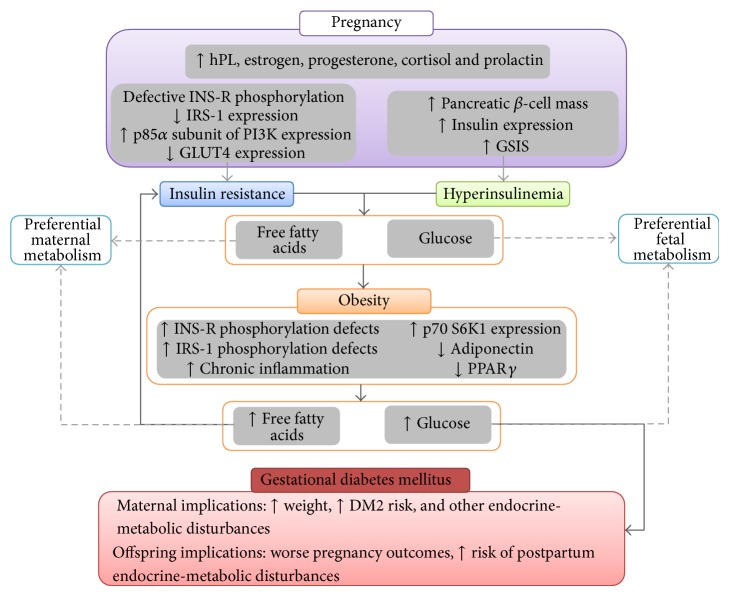Figure 2.
Mechanisms underlying insulin resistance in normal pregnancy physiology and gestational diabetes mellitus. Insulin resistance is a physiologic state which develops parallel to increased secretion of hPL, estrogen, progesterone, cortisol, and prolactin, principally. Although they favor IR by altering components of peripheral insulin signaling cascades, they also activate various mechanisms enhancing β-cell function. The result is an increased release of free fatty acids, which are predominantly metabolized by mothers, allowing for shunting of glucose towards fetal metabolism. In obesity several pathophysiologic mechanisms worsen IR in target tissues, leading to greater free fatty acid levels and dysregulation of glucose homeostasis. DM2: type 2 diabetes mellitus; GSIS: glucose-stimulated insulin secretion; hPL: human placental lactogen; INS-R: insulin receptor; IRS-1: insulin receptor substrate-1; PPARγ: peroxisome proliferator-activated receptor γ.

